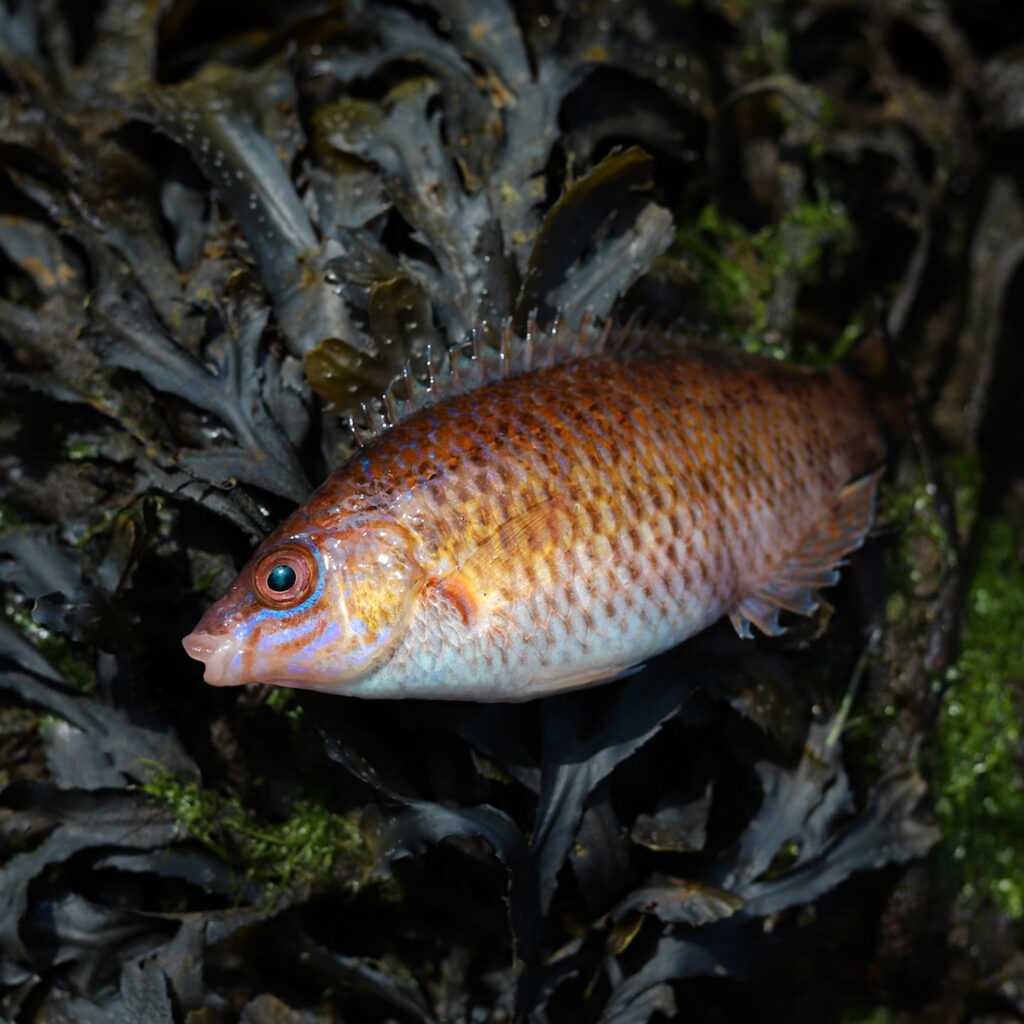I’d love to know the origins of the rock cook’s name, but a search hasn’t thrown anything up. I wondered if cook had some second meaning in Old English, or Cornish – but it looks as if it simply means to cook and always has done, so I’m stumped! Whilst I didn’t observe this petite chef cooking up any culinary delights from within the rocks, they were certainly fussy enough eaters!
… Their location was no real bother. As Swanage is for the Baillon’s, the stretch of coast between Torquay and Brixham appears to be a particular stronghold for ‘the cook’. Despite their genuinely rare as hen’s teeth status they can be found in good numbers around Brixham Harbour, seemingly able to happily hold their own against their greedier cousins. From what I’d observed at low-tide (under a shady Brixham pontoon on two sequential lunchtimes) I wondered if this is because of their eating habits – whilst they are of course opportunists, like all wrasse, they also appear to be extensive grazers. The whole time I was chasing one they didn’t stop picking at the rockwork, in fact, and that’s what made catching one so troublesome!
The first lunchtime I persisted with small sections of the ‘old faithful’ isome worms, fished on short dropshot rigs with tiny size 18 hooks. I’d found the fabled cooks, at least, with a nest of seven or eight fish holding up under a couple of slabs of rock in two feet of water. They’d periodically appear from beneath their rock and give it a once over (diligently pecking away at the edges of the rock as they went) before slinking off or moving on. Casting as delicately as I could I simply couldn’t tempt one – the isome worms were almost too blatant, which was ridiculous. I’d come close several times, with a number of the fish following the worm as it fell through the water column, but just eyeballing it intensely before growing bored and continuing their grazing. They were frustratingly fussy… The tide was soon flooding (and a high-tide rock mark calling my name) so I snuck off, vowing to return the next lunchtime.

I’d a plan the next morning… I’d called ahead at Brixham Tackle, from the campsite, and they’d confirmed they sold maggots. I was soon back under the pontoon, flicking a few reds in with every cast. Whilst I didn’t see the cooks eating any, the ballan, blennies, pouting and goldsinny were more than happy to! The trickle of reds seemed to be doing the trick, and the cooks slowly started showing some interest in them in a curious but very casual fashion. It was the females who were first to let their guard down; they outnumbered the males several to one and appeared to be slightly more interested in feeding – the odds weren’t in favour of the ‘blue boys’.

It took a little over an hour, but an inquisitive female eventually took the bait… I’d landed a single maggot on a slab of rock and caught the attention of two females as I teased it down the shelf, landing it in an inches wide gap in the rockwork. It had just fallen into the crevice when the rod tip stuttered; mere seconds passed between the initial bite and having the fish in a firm grip in the palm of my hand… To have it fall off the micro barbless hook after two lunchtimes of effort would have been too much to bear! She wasn’t a peacocky male, but she was still gorgeous – painted in vibrant peaches, and tinted with mother of pearl and glittering blues.

